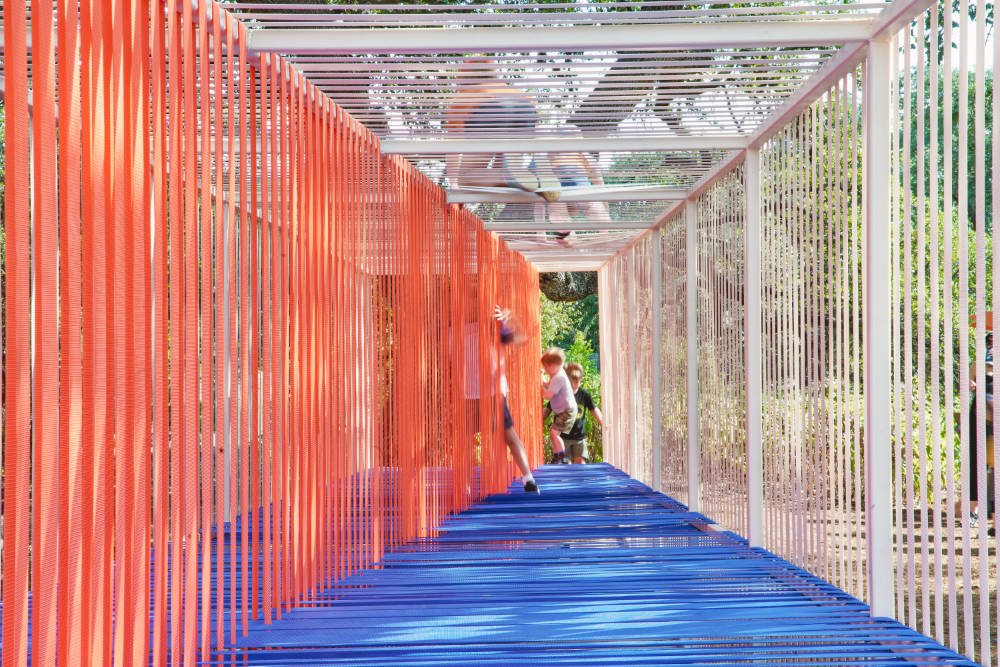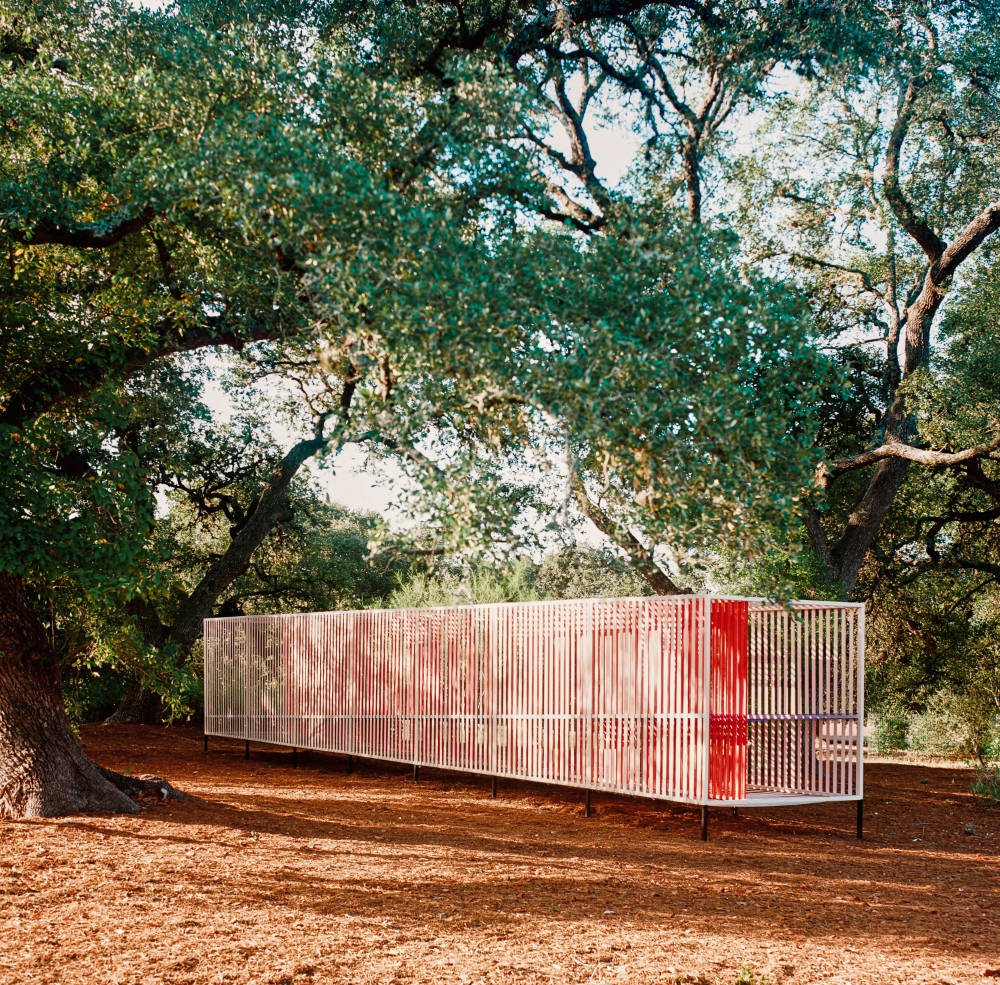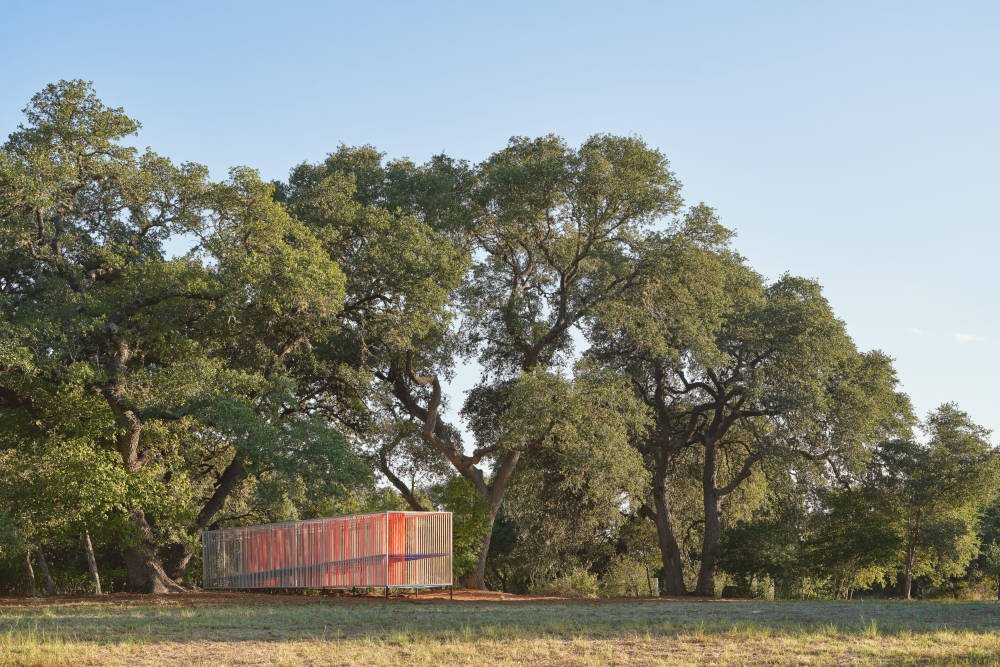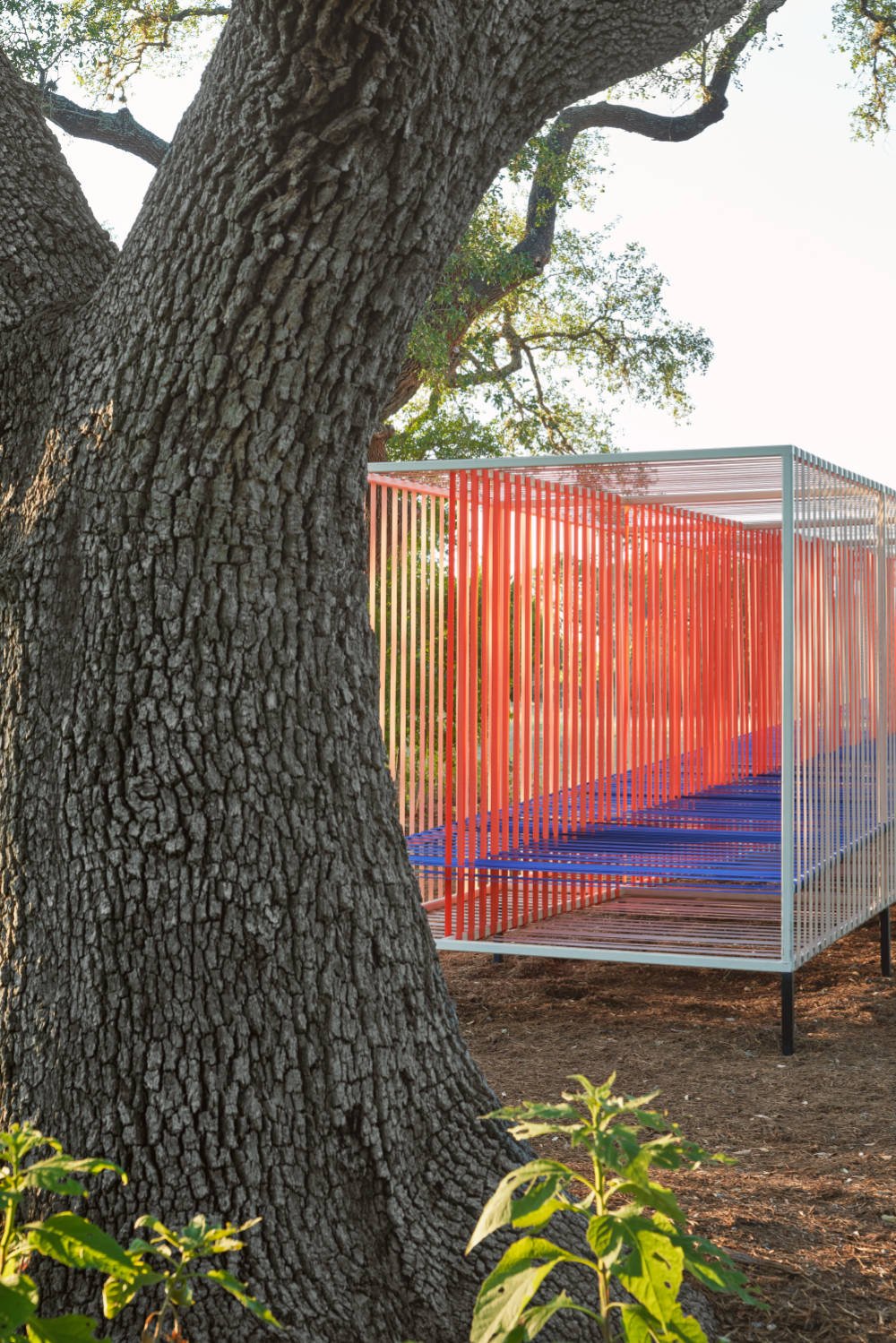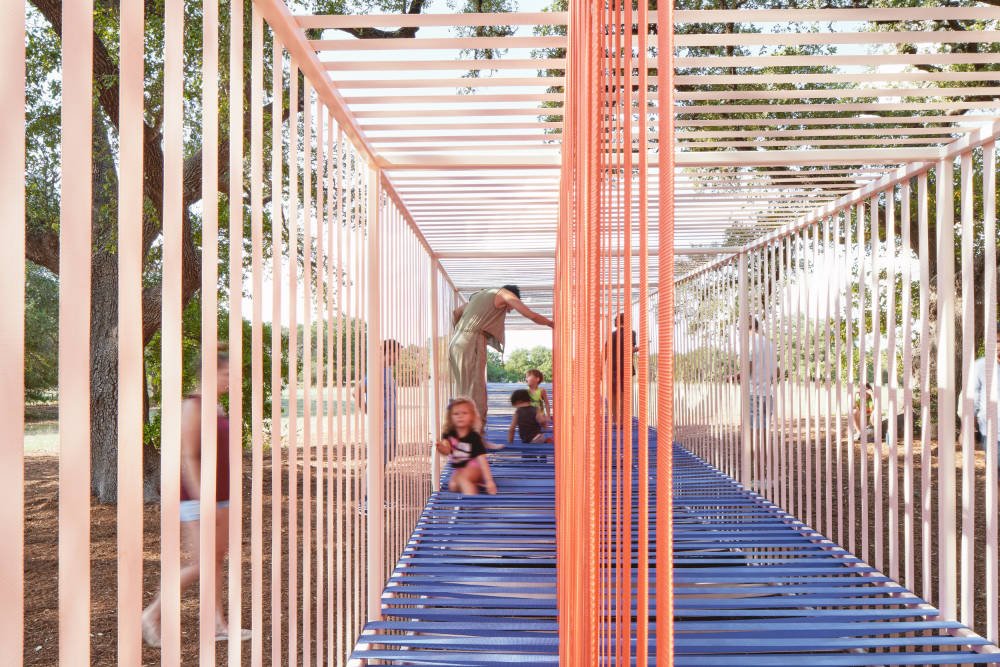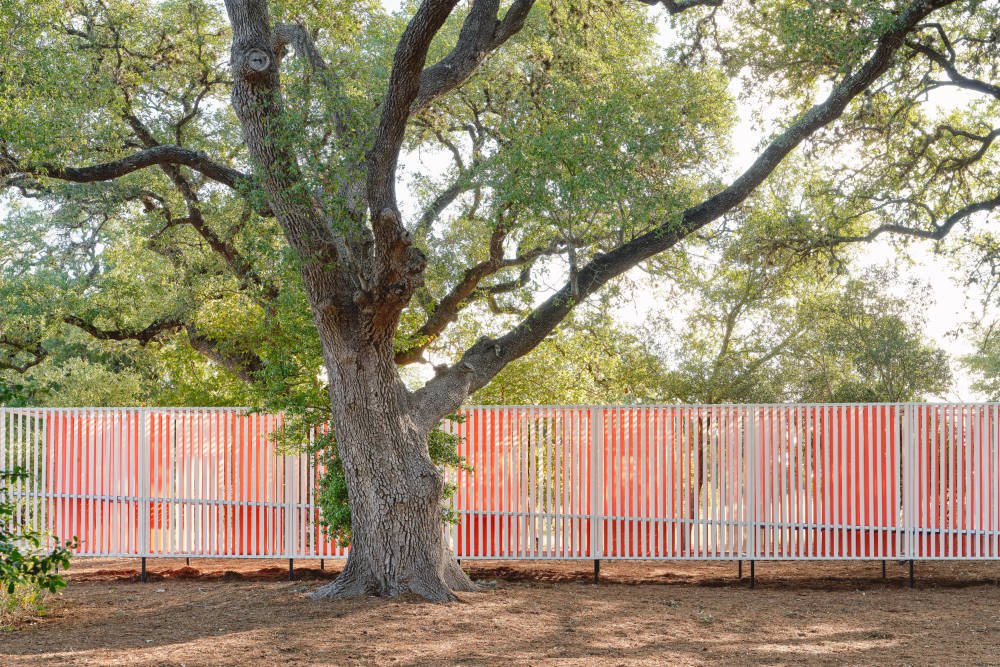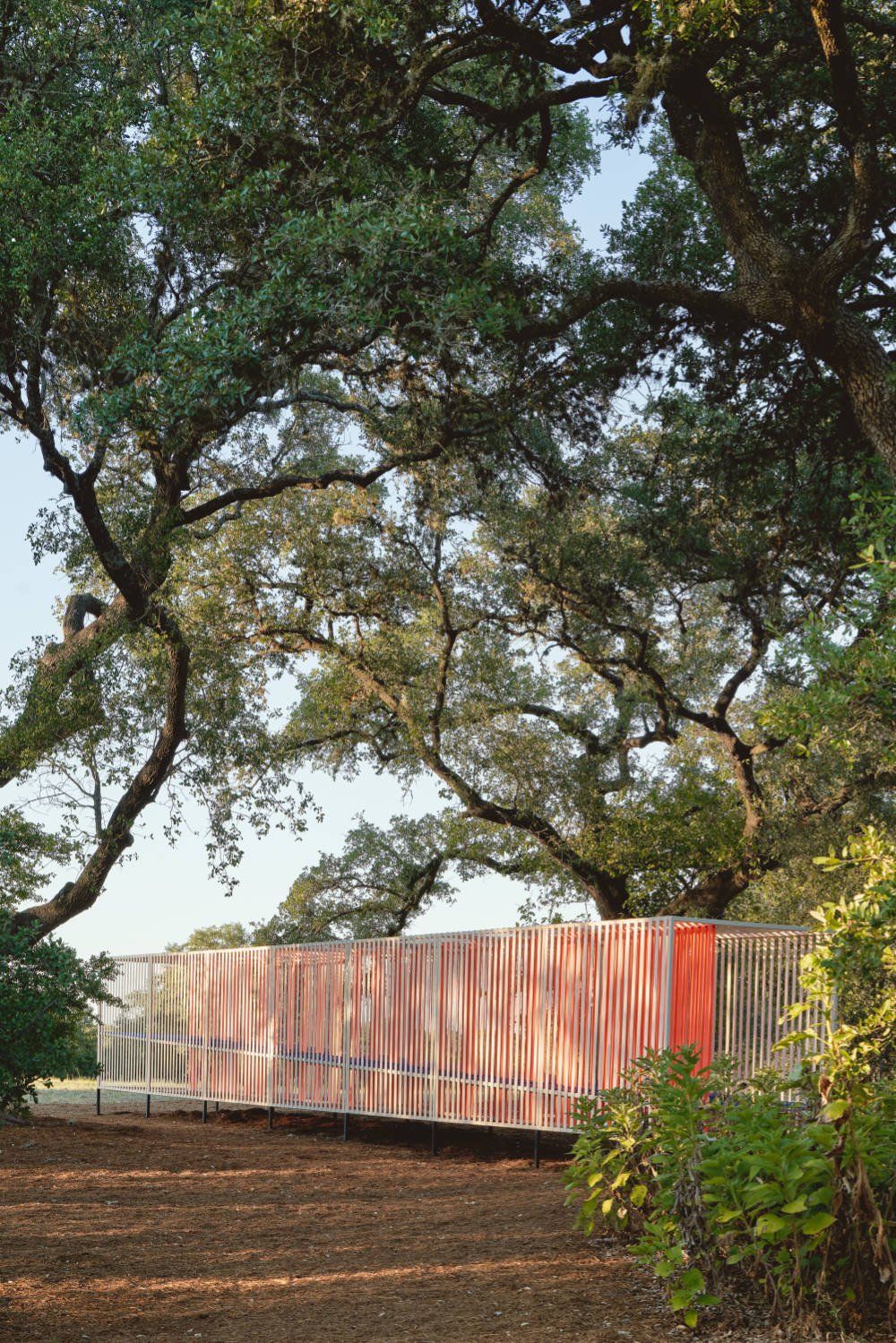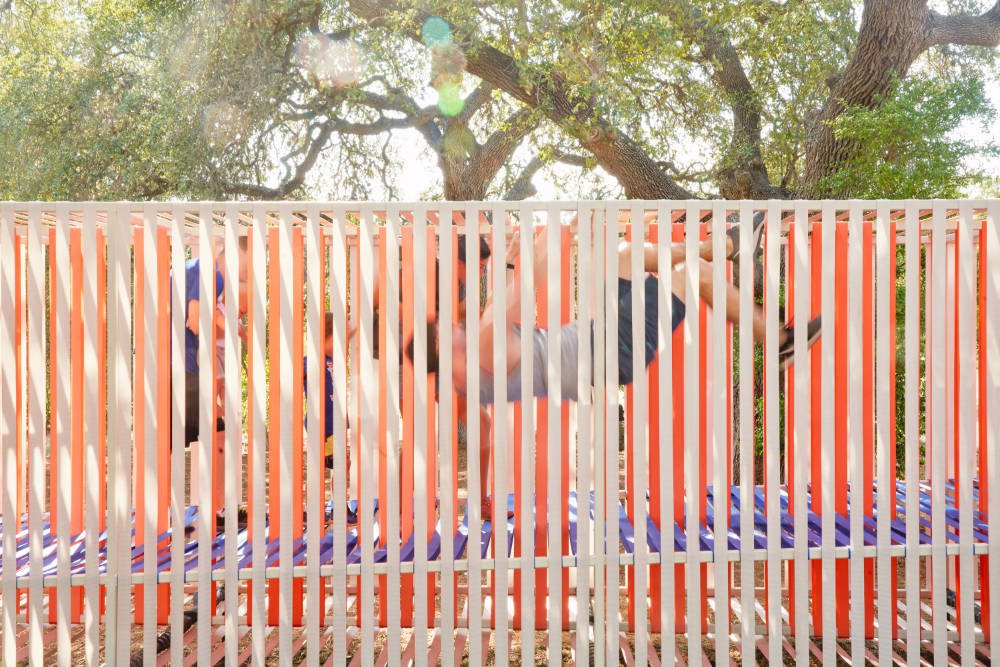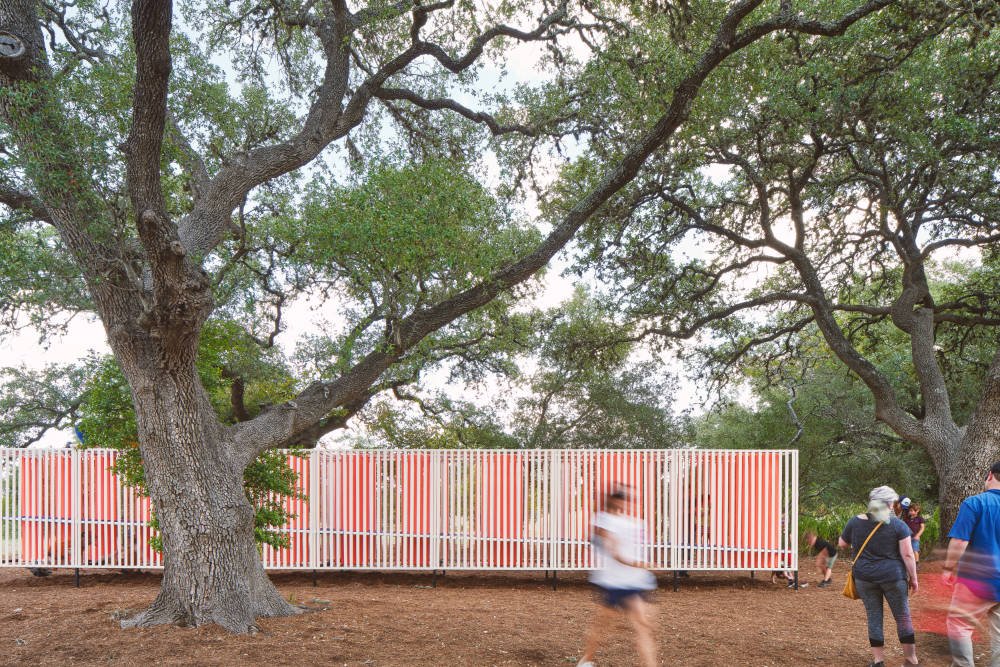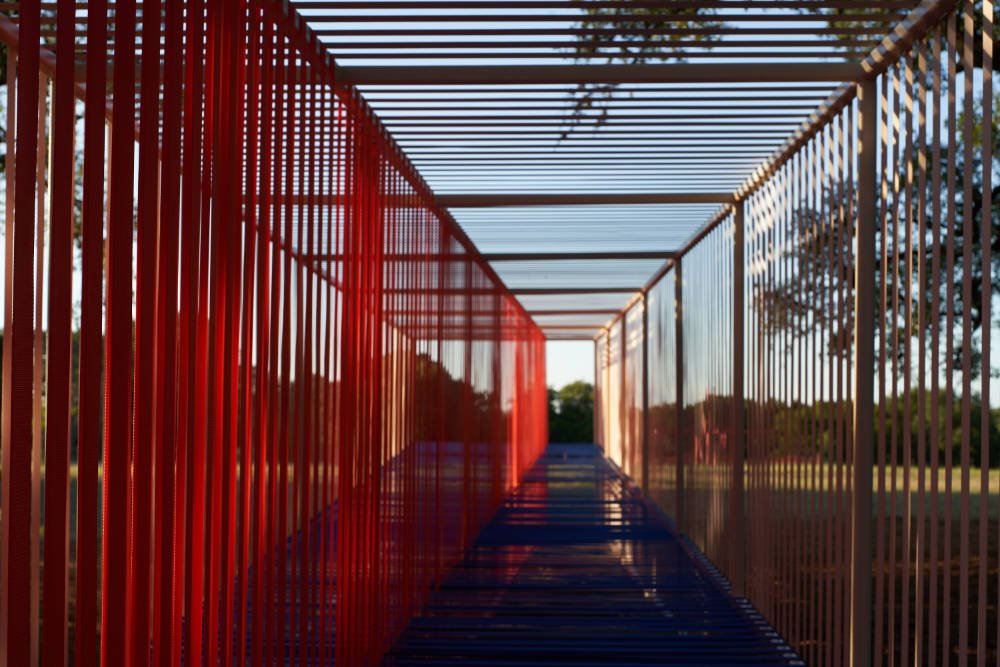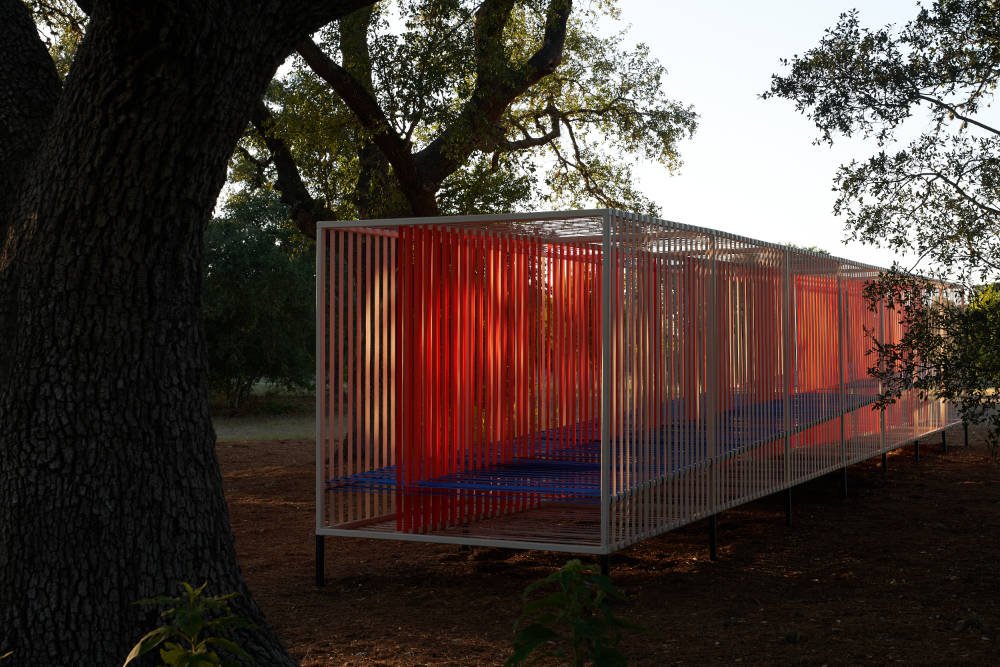Residential
Fortlandia
Fortlandia is a yearly outdoor exhibition featuring 10 forts designed and built by local architects, designers and artists for the Mollie Steves Zachry Texas Arboretum at the Lady Bird Johnson Wildflower Center in Austin, Texas. Fortlandia seeks to engage with its visitors by inspiring play while provoking a sense of adventure and imagination, with the ultimate goal of cultivating appreciation for art and nature in children and adults alike.
The inspiration for Color Trail originates from the inherent order in nature. Though seemingly organic, wildflowers exhibit an ordered structure, from their precise petal number and pattern to their seemingly organized propagation across grassy fields. This is often the scene of the Texas Hill Country, where clusters of colorful wildflowers are found amid otherwise plain sceneries. Color Trail emulates this idea by having a monochromatic exterior shell that envelops highly contrasting planes that intersect each other. The intersecting planes are dyed blue and red after the Texas bluebonnet and the Texas Indian paintbrush, two of Lady Bird Johnson’s favorite flowers.
Color Trail is composed of two intersecting 42-foot-long planes of color that shift slightly from each other, both sheathed within a six by six foot extruded visually porous box. An armature of 1 1/2” square steel tubes wrapped in 2” wide polyester webbing supports and partially conceals the planes, while giving a glimpse of the colorful interior. The interior planes subtly rise and fall in parallel with the horizon and the surrounding landscape.
We wanted participants to enjoy the mystery of seeing a semi-solid structure nestled into the landscape, and to feel compelled to experience a physical interaction. Participants could enter at either end, experiencing a slight bounce beneath their feet while catching fleeting views through sunlit straps and hearing others making their way through; some visible, some hidden. A series of rhythmic openings in the vertical plane, coupled with an opening in the horizontal plane as another access point to the lowest level, allowed for participants to create their own path. Participants could then climb and make their way to the opposite end or back to the beginning again.
Photography Credit: Leonid Furmansky
The inspiration for Color Trail originates from the inherent order in nature. Though seemingly organic, wildflowers exhibit an ordered structure, from their precise petal number and pattern to their seemingly organized propagation across grassy fields. This is often the scene of the Texas Hill Country, where clusters of colorful wildflowers are found amid otherwise plain sceneries. Color Trail emulates this idea by having a monochromatic exterior shell that envelops highly contrasting planes that intersect each other. The intersecting planes are dyed blue and red after the Texas bluebonnet and the Texas Indian paintbrush, two of Lady Bird Johnson’s favorite flowers.
Color Trail is composed of two intersecting 42-foot-long planes of color that shift slightly from each other, both sheathed within a six by six foot extruded visually porous box. An armature of 1 1/2” square steel tubes wrapped in 2” wide polyester webbing supports and partially conceals the planes, while giving a glimpse of the colorful interior. The interior planes subtly rise and fall in parallel with the horizon and the surrounding landscape.
We wanted participants to enjoy the mystery of seeing a semi-solid structure nestled into the landscape, and to feel compelled to experience a physical interaction. Participants could enter at either end, experiencing a slight bounce beneath their feet while catching fleeting views through sunlit straps and hearing others making their way through; some visible, some hidden. A series of rhythmic openings in the vertical plane, coupled with an opening in the horizontal plane as another access point to the lowest level, allowed for participants to create their own path. Participants could then climb and make their way to the opposite end or back to the beginning again.
Photography Credit: Leonid Furmansky
